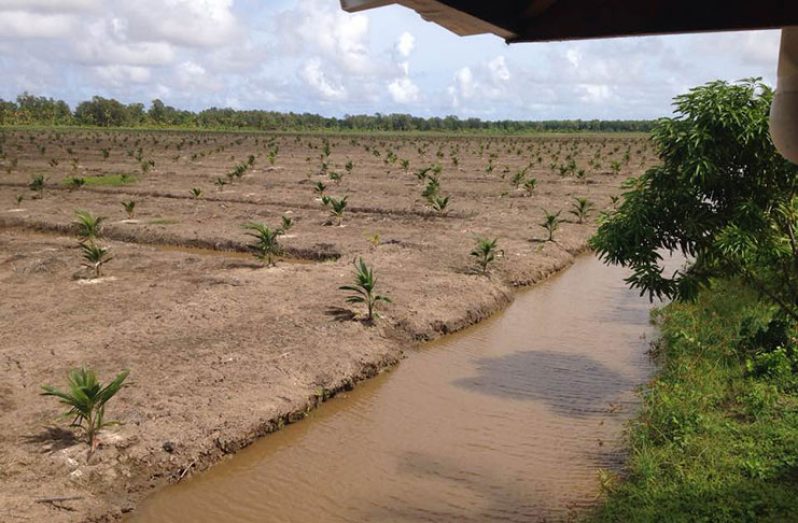Ecological requirements of coconut palms
Coconut palms can grow in various environments, although certain ecological conditions limit their growth. Several agro-climatic factors affect productivity, including altitude, rainfall, temperature, relative humidity, wind, solar radiation, day-length and, soil type including its physical and chemical properties.
Altitude affects coconut production and oil content: the higher the elevation, the lower the temperature. Optimum altitudes are below 400m at latitudes between 30° N and 30° S but coconut plants can grow well up to an elevation of 900m at this same range of latitudes.
Trees that grow at elevations above 500m produce a thin endosperm and low oil content. Coconut palms thrive well under an evenly distributed annual rainfall ranging from 1,000 mm to 3,000 mm. A suitable annual rainfall ranges from 1200 to 2500 mm per year.
Rainfall distribution also plays a key role in determining coconut growth and production and should be at least 130mm per month. As the tree stores little moisture and has no tap roots, it is not suited for regions with long and pronounced dry spells during, which reduces the water table considerably. A water table that is too high and remains stagnant over long periods is also harmful to the palm. When rainfall drops below 1,000mm per year (or uneven) coconuts could grow successfully only when irrigated.
For optimum growth and maximum yield, the mean annual temperature should be approximately 27°C with a diurnal variation of 6°C to 7°C and a relative humidity at 80 – 90%. An average ambient temperature of 27°C is good (less than 20°C and more than 34°C is not suitable). When the average monthly minimum temperature is less than 18°C, growth is reduced and female flowers abort.
However, some varieties may produce satisfactorily at temperatures less than 18°C. Optimum sunlight is 2000 – 2200 hours per annum with the minimum being 1500 hours/annum or 125 hours per month.
Regions that are subject to frequent stormy conditions and hurricanes are not suitable for growing the coconut palm. Dwarf palms are generally less resistant than the Talls to strong winds because of the former’s shallower root system. Trees are most at risk from uprooting at 3 – 5 years old since the root system is less well-developed than the above-ground biomass.
Coconut is grown under different soil types such as loamy, lateritic, coastal sandy, alluvial, clayey and reclaimed soils of marshy lowlands. The ideal soil conditions for better growth and performance of the palm are loose well-drained soils about 50 – 100 cm deep with good water holding capacity, a pH ranging of 5.2 – 8.0, presence of water table within 3m and, absence of rock or any hard substratum within 2 m of the surface. Production is limited by shallow and compacted soils, heavy clays, waterlogging and drought.
Every aspect in the production cycle for coconuts should have associated with it a set of protocols to ensure the use of good agricultural practices.



.jpg)








